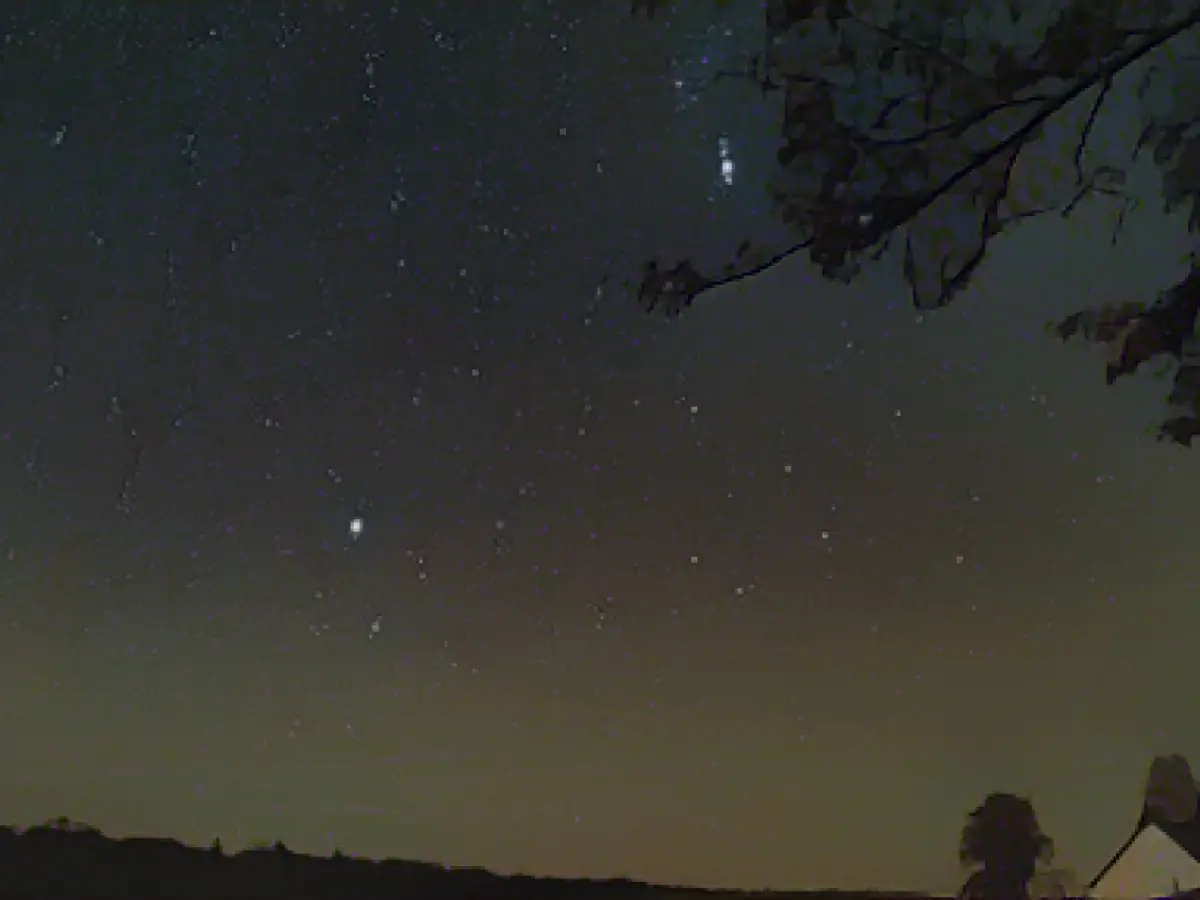Astronomy - The constellations and planets of New Year's Eve
Only rarely do so many people look up at the sky at the same time as at midnight at the turn of the year. Provided the sky is cloudless, there is not only the colorful spectacle of the New Year's Eve fireworks to marvel at: the starry sky also offers a magnificent show.
However, New Year's Eve this year only offers good conditions for stargazing in some areas. According to the German Weather Service (DWD), there will initially be some rain in the eastern half of Germany on Monday night, with some clearing later on. Otherwise, it will be cloudy to very cloudy and there will be showers in some areas - especially in the west and northwest.
Even during the fireworks, a particularly bright star with a calm glow will catch the eye in good weather high in the west. What you might initially think is a flare is actually Jupiter, the largest planet in the solar system.
Constellations of the winter hexagon
Once the smoke from the fireworks has cleared, the winter sky presents itself in all its glory. The southern part of the firmament up to the zenith is taken up by the constellations of the winter hexagon. It consists of the bright stars Capella in Aquarius, Aldebaran in Taurus, Rigel in Orion, Sirius in the Great Dog, Prokyon in the Little Dog and Pollux in Gemini.
A small collection of stars, the Pleiades, can be seen to the west of Aldebaran. It is a young star cluster 444 light years away, containing many hundreds of stars. However, depending on the viewing conditions, only six to nine of them are bright enough to be seen with the naked eye. It is therefore worth looking at the Pleiades with binoculars that are as bright as possible.
Band of the Milky Way
If the sky is dark enough, you can see the shimmering band of the Milky Way rising from the south-east, passing through Gemini and Aquarius and then continuing north-west through Perseus, Cassiopeia and Cepheus. To the west of Taurus is Aries, currently enriched by the planet Jupiter, as well as Andromeda, Pisces, Pegasus and, deep in the southwest, Whale.
East of Gemini in the zodiac follows Cancer and Leo as the messenger of spring. There, in Leo, is the waning moon on New Year's Eve. Cancer is home to one of the most beautiful star clusters in the northern sky: the Nativity, or Praesepe in Latin, which is 610 light years away. The star cluster contains around a thousand stars, but to the naked eye it only looks like a faint, foggy spot in the sky. But in binoculars it is a magnificent sight.
Impressive: Hunter Orion
The most impressive constellation of winter is the hunter Orion with his belt and sword hilt. In Greek mythology, Orion is a giant hunter who, after his death, was transferred to the sky together with his two dogs Sirius and Prokyon.
In the middle of the sword's hilt, a blurry spot can be seen through binoculars. This is the Great Orion Nebula, a gas cloud about 25 light years across and 1300 light years away. Young, hot stars are causing the gas there to glow. In the center of the cloud, the trapezoid of four brightly shining stars can be seen with a telescope.
Anyone celebrating the turn of the year into the early hours of the morning should look to the south-east on the way home. There, Venus shines as a bright, radiant morning star at dawn. On New Year's Day, the planet rises at around 5.15 a.m. One hour before sunrise, the morning star is about 15 degrees above the horizon.
Read also:
- This will change in December
- Attacks on ships in the Red Sea: shipping companies avoid important trade route
- Houthi rebels want to launch further attacks despite international coalition
- USA forms military coalition against Houthi attacks on ships in the Red Sea
- Despite the anticipated rain in eastern Germany on New Year's Eve, stargazers in some regions might still have a chance to witness the spectacle, with Jupiter, the largest planet in our solar system, shining brightly in the west.
- After the New Year's Eve fireworks have faded, the starry sky unveils the constellations of the winter hexagon, including Rigel, a prominent star in the constellation Orion, a Planet that played a significant role in ancient mythology.
- Placing binoculars towards the Pleiades, a colorful cluster of stars located west of Aldebaran, can reveal hundreds of stars that are not visible to the naked eye, offering a more vibrant celestial display.
- The German city of Berlin, amidst the rain, could serve as an excellent backdrop for gazing at the night sky, with the winter hexagon taking center stage in the southern half of the firmament.
- Lastly, as the celebration moves into the early hours of New Year's Day, the planet Jupiter can be spotted in the west, while Venus shines as a bright morning star in the south-east.
- During the turn of the year, people in Germany might also want to observe Jupiter, the largest planet in our solar system, as it offers a unique visual connection between the Earth and Planet's celestial bodies, sending a unifying message across the distance in the Universe.
- For those interested in astronomy, capturing the magnetic energy of New Year's Eve in Germany, the colorful burning spots of fireworks can be paralleled to the colorful bursts of stars in the Orion constellation, reminding us how the science of the stars connects us across space and time.
Source: www.stern.de







